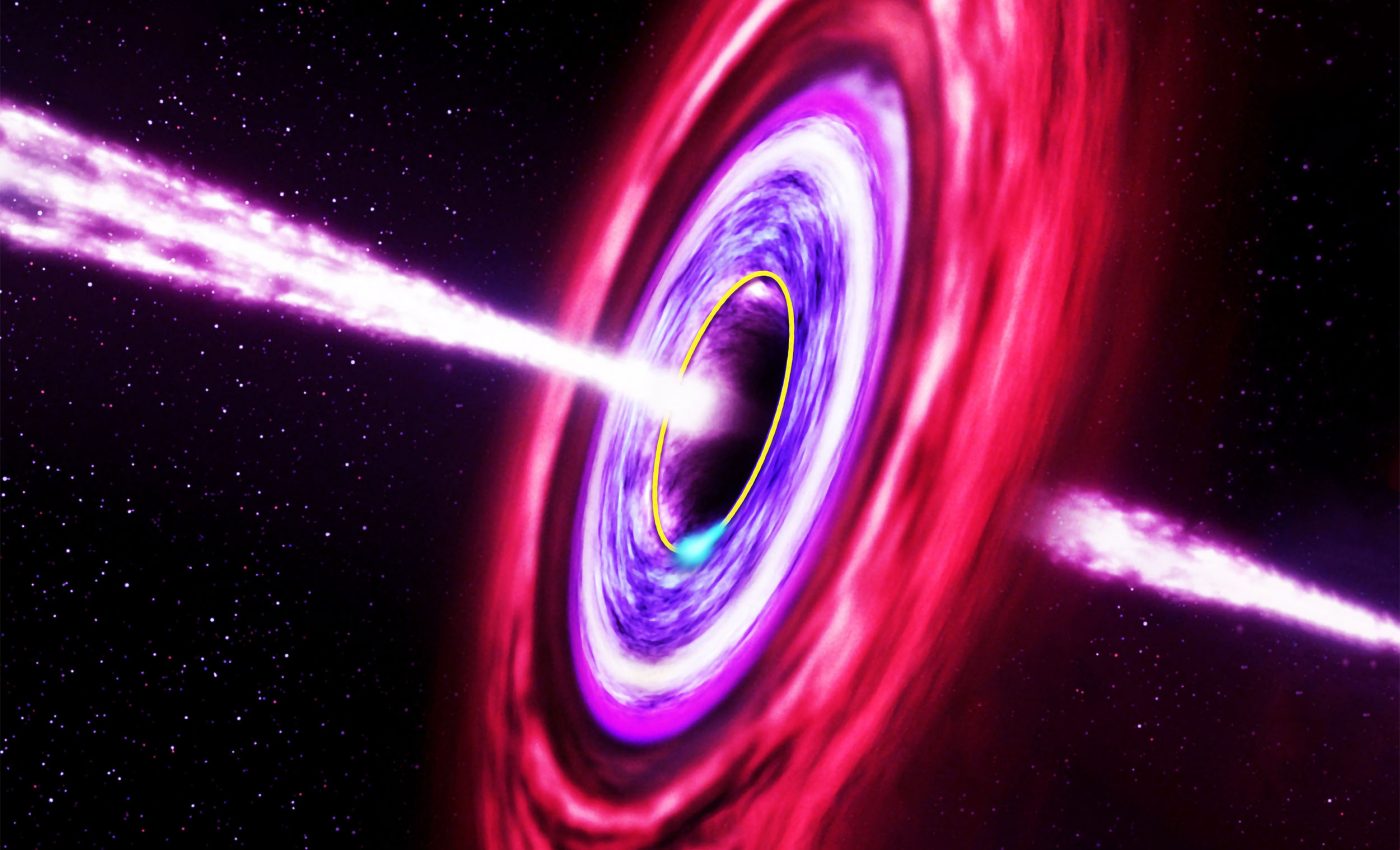
Black holes are breaking the laws of physics, leaving astronomers baffled
Jets near supermassive black holes are speeding up when they should be cruising. That is what a fresh look at the sharpest radio images suggests.
A team working from institutes in Bonn and Granada analyzed the Event Horizon Telescope‘s 2017 observations of 16 active galaxies and found jet behavior that conflicts with the standard picture.
The Event Horizon Telescope, or EHT, links radio dishes to act as one instrument. An active galactic nucleus, a galaxy’s bright black hole powered center, pours out radio light.
This analysis compared radio size, flux, and brightness temperature, an intensity measure expressed as an equivalent temperature, across frequencies. The team found that farther out the jets look hotter and brighter.
At 230 gigahertz, EHT sees features just millionths of a degree wide. That reach is possible with very long baseline interferometry, a technique that combines distant antennas into one view.
Black hole jet models
The Blandford-Königl model, a conical jet picture with nearly constant speed, has guided radio astronomy for decades. It predicts simple trends for brightness and size with distance.
Near the core the data require either bulk acceleration or energy transfer from fields to particles. The magnetization, how strongly magnetic fields control the plasma energy, cannot stay fixed there.
Geometry can trick our eyes when a jet bends toward us. That is because Doppler boosting, apparent brightening from motion toward the observer, can mimic a speed up.
Using sixteen sources reduces the chance that one oddball dominates the conclusion. A population level pattern is hard to blame on a single bend or flare.
Closer, sharper, weirder
At 3.5 millimeters, images of M87 revealed a ring linked to the jet base. The ring looks thick because of synchrotron self absorption, radio waves blocked by hot plasma close to the hole.
That view shows the jet connecting to the inner flow. It tells us that the region feeding the jet is wider and messier than a simple nozzle.
Event Horizon Telescope observations of Centaurus A traced narrowing and mapped brightness near the launch point. The collimation, how a flow narrows with distance, followed a gentle profile.
Together these results bracket the EHT scale and hint at layered jets. That context strengthens the case that acceleration near the core is common.
Black hole jet acceleration
If black hole jets brighten outward, energy must move into the particles that make the radio glow. A high Poynting flux, energy carried by electromagnetic fields, can turn into particle motion.
Magnetic turbulence can spark magnetic reconnection, field lines that snap and realign while dumping energy into electrons. That process can raise speed without adding mass.
Another option is a spine surrounded by a slower sheath. The inner spine could accelerate while the sheath sets the overall collimation.
The EHT result does not pick one mechanism. It narrows the menu by showing where and how fast the changes happen.
Confirming with other telescopes
Long term VLBA monitoring found accelerations in many black hole jets pointing almost directly at Earth. Blazars often speeds up within dozens of light years of the core.
Those studies saw speeds rise near the base and settle or slow farther out. The EHT pattern fits the start of that curve at even smaller scales.
Arrays like the GMVA fill the gap between EHT and longer wavelength surveys. Adding stations increases the maximum baseline, the distance between two antennas used together, which sharpens the image.
Since 2017, new antennas have joined global networks and improved coverage in the north and south. Better coverage makes subtle changes along the jet easier to measure.
Lessons from black hole jets
Black hole jets dump energy into surrounding gas and change how stars form. That feedback, energy and matter that alter a galaxy’s growth, depends on where the jet accelerates and how long it stays fast.
In March 2025, Reuters reported that the Euclid mission released early sky maps showing how galaxies form a vast cosmic web.
Officials explained that only about 5 percent of the universe is currently understood, while the remaining 95 percent remains dark and mysterious.
Pinning down jet physics slots one piece into that bigger puzzle. It links the behavior near a black hole to signals we map across the sky.
Measuring polarization, the orientation of radio waves that traces magnetic fields, will reveal how energy threads the flow. Tracking those threads over time will test acceleration directly.
The main study has been published in Astronomy & Astrophysics.
—–
Like what you read? Subscribe to our newsletter for engaging articles, exclusive content, and the latest updates.
Check us out on EarthSnap, a free app brought to you by Eric Ralls and Earth.com.
—–













